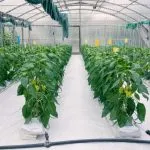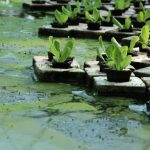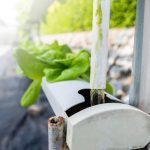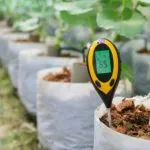Hydroponic gardening presents a unique and efficient way to cultivate plants, but it’s not without its challenges. One of the most common obstacles hydroponic gardeners face is dealing with leaf problems. These issues can arise from a variety of causes, including nutrient imbalances, water quality issues, inadequate light, and pest infestations. Understanding the symptoms and knowing how to address them is crucial to maintaining a healthy hydroponic garden.
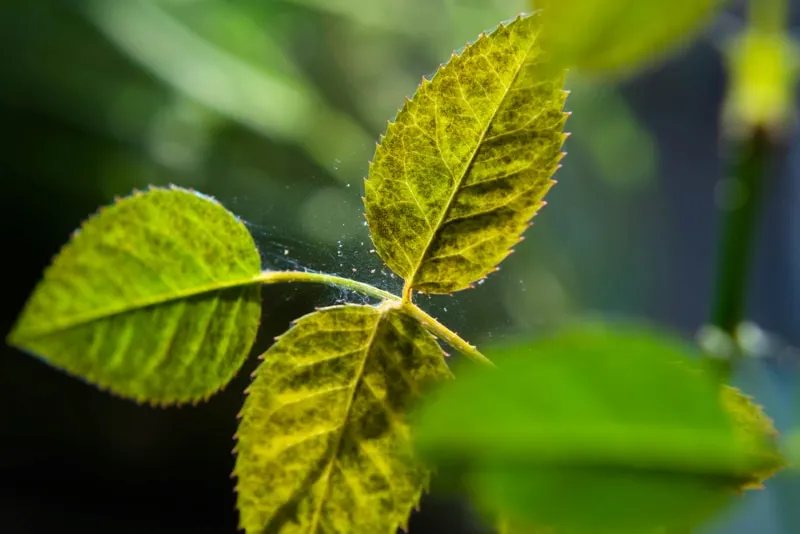
In this blog post, we delve into some of the most common hydroponic leaf problems, their symptoms, and their solutions. We’ll guide you through identifying issues based on the visual cues your plants give you and provide practical advice on how to restore your garden to its prime health. By the end of this guide, you’ll be equipped with the knowledge to troubleshoot effectively and keep your hydroponic garden thriving.
Importance Of Healthy Leaves On Hydroponic Plants
Healthy leaves are crucial to the overall wellbeing and productivity of hydroponic plants. They are the primary sites of photosynthesis, the process through which plants convert light energy into chemical energy to fuel their growth. A healthy leaf is a powerhouse that drives a plant’s life cycle and contributes to its overall development and yield.
Each leaf on a hydroponic plant functions like a solar panel, absorbing sunlight and converting it into energy. The larger and healthier the leaf, the more energy it can produce. This is particularly important in hydroponic systems where plants don’t have access to natural soil nutrients, relying heavily on photosynthesis and nutrient solutions for their growth.
Moreover, healthy leaves are a vital indicator of a plant’s overall health. They reflect the plant’s nutritional status, showing signs if the plant is lacking in specific nutrients. For instance, yellow leaves may indicate a nitrogen deficiency, while purple or reddish leaves may suggest a phosphorus deficiency. By regularly monitoring the condition of the leaves, growers can identify nutritional deficiencies early and adjust the nutrient solution accordingly to prevent stunted growth or other health issues.
Healthy leaves also play a significant role in transpiration, a process that cools plants and drives nutrient uptake. In hydroponic systems, where root systems are often submerged in nutrient-rich water, adequate transpiration is essential to prevent root rot and ensure the plant absorbs the necessary nutrients.
Therefore, maintaining healthy leaves in hydroponic plants is of utmost importance. They not only contribute to the plant’s growth and yield but also act as an early warning system for potential health issues. By ensuring their leaves are healthy, growers can maximize their hydroponic systems’ productivity and sustainability.
Why Are My Hydroponic Plants Turning Yellow?
If you notice your hydroponic plants turning yellow, it’s a cause for concern and warrants immediate attention. Yellowing of leaves, also known as chlorosis, can be a symptom of multiple issues in your hydroponic setup. It’s often an indication that your plants are not receiving the nutrients they need to thrive, particularly nitrogen, iron, and magnesium. These are all essential for the production of chlorophyll, the pigment that gives leaves their green color and is crucial for photosynthesis.
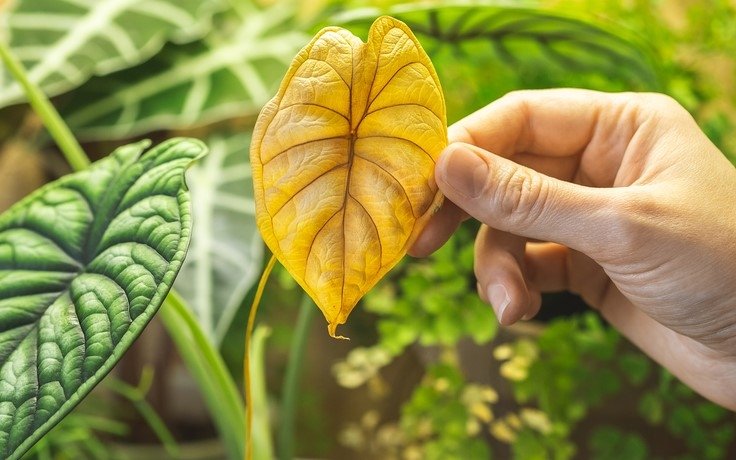
Plants grown hydroponically require the same basic nutrients as those grown in soil, but these nutrients must be provided directly through the water solution they grow in. The essential nutrients are usually split into macro and micro nutrients, each playing a fundamental role in plant growth.
- Macronutrients: These are nutrients required in larger amounts. They include Nitrogen (N), Phosphorus (P), and Potassium (K) – often referred to as the NPK ratio on fertilizers. Secondary macronutrients include Calcium (Ca), Magnesium (Mg), and Sulfur (S).
- Micronutrients: These are nutrients required in smaller amounts, but are no less vital. They include Iron (Fe), Manganese (Mn), Zinc (Zn), Copper (Cu), Molybdenum (Mo), and Boron (B).
The ability to identify nutrient deficiencies in your plants can be an invaluable skill. Each nutrient deficiency can manifest in different ways, but here are some common symptoms:
- Nitrogen deficiency: Older leaves turn yellow while new growth remains green. This typically manifests as yellowing at the bottom of the plant first and moves upward.
- Phosphorus deficiency: Leaves may show a purple undertone and may have stunted growth.
- Potassium deficiency: Look out for yellowing at leaf edges and poor flowering or fruiting.
- Calcium deficiency: New growth is affected and it may cause deformed leaves.
- Magnesium deficiency: Older leaves yellow from the center outwards, while veins remain green.
- Iron deficiency: This usually results in yellowing between the veins of young leaves, while the veins themselves remain green.
Another common cause for yellow leaves in a hydroponic system is overwatering or poor oxygenation. Roots need to breathe, and if they’re constantly submerged in water without enough oxygen, it can lead to root rot. The leaves turn yellow because the roots are no longer able to absorb water and nutrients effectively.
Incorrect pH levels in your hydroponic solution can also cause yellowing leaves. If the pH is too high or too low, it can prevent the plant roots from absorbing the necessary nutrients, even if they are present in the solution.
Why Are My Hydroponic Leaves Curling Down?
Leaves curling down in a hydroponic system, also known as “leaf clawing,” can be a sign of several potential issues. It’s crucial to identify the cause swiftly and accurately to protect the health and productivity of your plants.
One common cause of leaf curling in hydroponics is nutrient imbalance. Plants require a carefully calibrated mix of nutrients to thrive, and imbalances can lead to various symptoms, including curling leaves. Overfeeding with nitrogen, in particular, can cause this issue. The excess nitrogen causes the leaves to curl down and can turn the leaves a darker green color.
Hydroponic systems provide plants with water directly to their roots, making overwatering a less common issue than in soil gardening. However, it can still occur if the roots are constantly submerged without any periods of dryness. Overwatering can lead to root rot, which causes the leaves to curl down as the plant struggles to absorb nutrients.
Temperature fluctuations can also cause leaf curling. If your hydroponic garden is exposed to temperatures that are too high or too low, the leaves may respond by curling down. Plants in excessively hot conditions may curl their leaves to prevent water loss, while those in too cold conditions may do so due to slowed metabolic activity.
The pH level of your hydroponic solution plays a significant role in nutrient uptake. If the pH is too high or too low, it can lock out certain nutrients, causing deficiencies that can result in curling leaves.
Finally, pests or disease could also be the culprit. Certain pests, like aphids or spider mites, can cause leaf curling. Diseases like fungal or bacterial infections can also lead to curling and wilting leaves.
What Causes Hydroponic Leaf Tip Burn?
Hydroponic leaf tip burn, also known as nutrient burn, is a common issue many hydroponic growers encounter. This problem is typically characterized by the yellowing or browning of the leaf tips and can eventually lead to the death of the plant if left untreated.
The primary cause of leaf tip burn is nutrient toxicity, which occurs when plants are fed too many nutrients. Plants can only absorb a certain amount of nutrients, and when this limit is exceeded, the surplus accumulates in the plant, causing the leaf tips to burn.
Water quality is another factor that can lead to leaf tip burn. If the water used in a hydroponic system is high in salts or heavy metals, it can cause damage to the plant’s root system and lead to nutrient burn.
Temperature and humidity conditions can also contribute to the development of leaf tip burn. High temperatures and low humidity levels can cause the plant to lose water faster than it can absorb it, leading to dehydration. In turn, this dehydration can intensify the effects of nutrient toxicity.
What Causes Black Spots on Hydroponic Leaves?
Black spots on hydroponic leaves can be an alarming sight for growers. This condition can be symptomatic of a few different problems within your hydroponic system.
One of the main causes of black spots on hydroponic leaves is a fungal infection, specifically fungi like Alternaria and Cercospora, which thrive in moist environments. These fungi can infiltrate your hydroponic system and attack the leaves of your plants, causing dark, circular spots to appear.
Bacterial leaf spot is another disease that can cause black spots on the leaves. This disease is often caused by bacteria such as Xanthomonas and Pseudomonas. Similar to fungal infections, bacterial leaf spot thrives in humid and warm conditions.
Nutrient deficiencies, particularly of manganese or zinc, can also result in black spots on the leaves. These deficiencies hinder the plant’s metabolic processes, which can lead to black spots, among other symptoms.
Insects such as thrips and aphids may also cause black spots. These pests can damage the plant’s tissue, which in turn allows sooty mold to grow, resulting in black spots.
Another possible cause is water quality. If the water in your hydroponic system contains high levels of certain heavy metals, it can lead to the formation of black spots on your plants’ leaves.
Lastly, environmental stressors such as high light intensity, extreme temperatures, or improper pH levels can also lead to black spots. These conditions can stress the plant and cause various symptoms, including the formation of black spots.
Preventive Measures for Hydroponic Leaf Problems
To maintain a healthy hydroponic system, it is essential to take preventive measures against leaf problems. Here are some strategies that can help you in the process:
- Maintain Nutrient Balance: Nutrient imbalance is a common cause of leaf problems in hydroponic systems. Regularly check and adjust nutrient levels to ensure your plants are getting the correct amount and balance of nutrients.
- Ensure Proper pH and EC Levels: The pH level of your hydroponic solution can greatly affect nutrient absorption. Keep the pH level within the ideal range for the specific plants you are growing. Moreover, the Electrical Conductivity (EC) of your solution can tell you how much nutrient content is in your solution. A high EC indicates a high concentration of nutrients. However, too high can burn your plants, while too low can starve them.
- Monitor Temperature and Humidity: High temperature and humidity can lead to conditions favorable for pathogens. Keep a close eye on the temperature and humidity levels in your growing area and adjust as necessary. Here are the ways you can lower temperature and lower humidity.
- Adequate Light Exposure: Make sure your plants are receiving the right amount of light. Too much or too little light can lead to leaf issues. The type of plant, its growth stage, and the time of year can all affect the amount of light needed.
- Maintain Cleanliness: Keep your hydroponic system clean. Regular cleaning can prevent the buildup of pathogens that can cause leaf problems.
- Proper Air Circulation: Good air circulation can help prevent the growth of mold and other pathogens. Use fans or other methods to ensure air is circulating properly in your growing area.
- Regular Inspection: Regularly inspect your plants for signs of leaf problems. Early detection can make treatment easier and more effective.
Taking these preventive steps can help keep your hydroponic plants healthy and free from leaf problems. Remember, prevention is always better than cure. By following these measures, you can create the optimum environment for your hydroponic plants to thrive.

